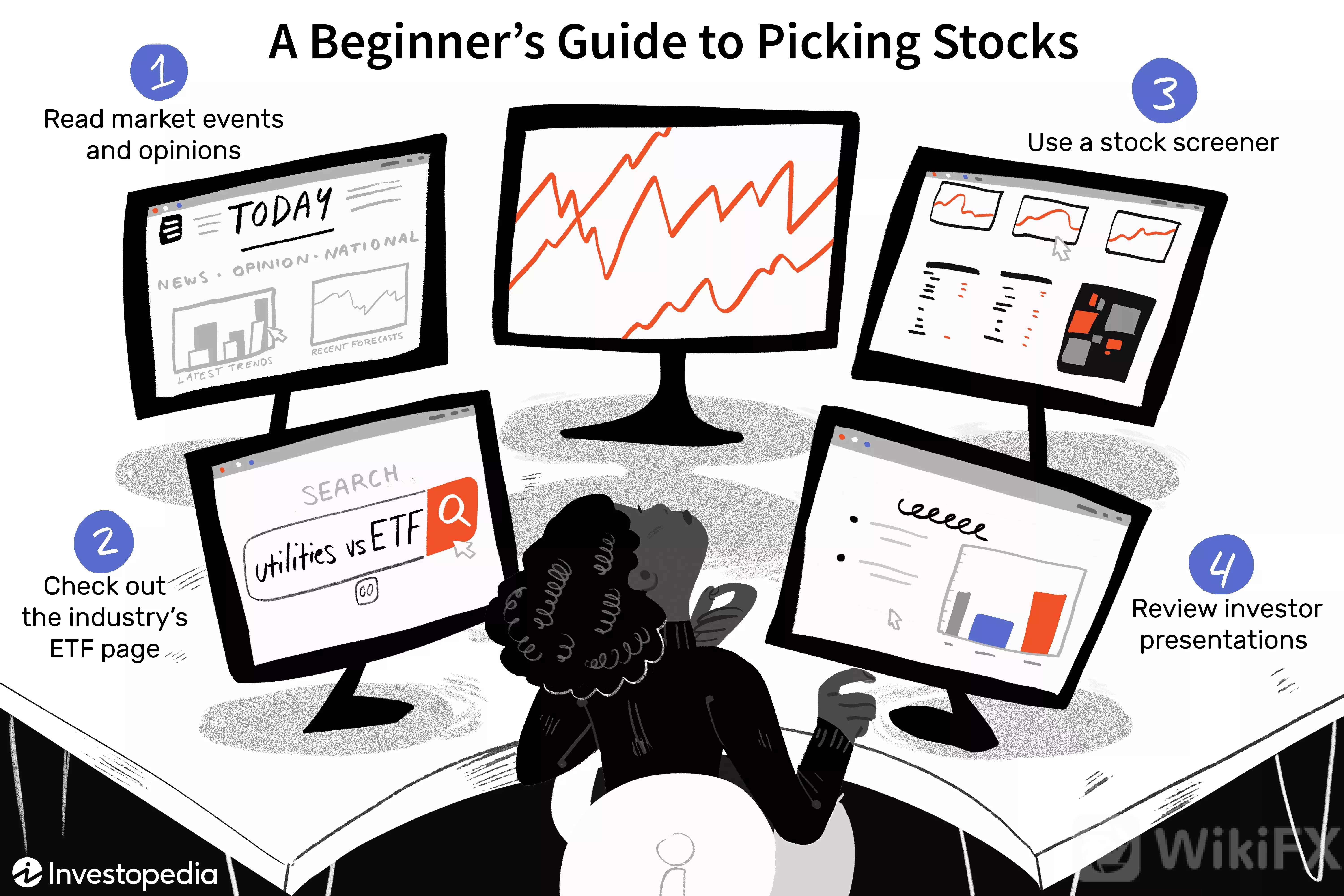 So you've finally decided to start investing. And you know the cardinal rule of the smart investor: A portfolio should be diversified across multiple sectors.
So you've finally decided to start investing. And you know the cardinal rule of the smart investor: A portfolio should be diversified across multiple sectors.
That pretty much covers the basics, whether or not you've waded through the more complicated concepts of technical analysis. You are ready to pick stocks.But wait! With tens of thousands of stocks to choose from, how do you go about selecting a few worth buying? Whatever some experts suggest, it's just not possible to comb through every balance sheet to identify companies that have a favorable net debt position and are improving their net margins.
KEY TAKEAWAYS
-
Decide what you want your portfolio to achieve, and stick with it.
-
Pick an industry that interests you, and explore the news and trends that drive it from day to day.
-
Identify the company or companies that lead the industry and zero in on the numbers.
A stock screener, if you use one, is prone to error. Riding the coattails of institutional investors is an option, but you should know that they tend to rely on safe blue-chip stocks that may or may not provide the best returns.
How to Pick a Stock
Smart stock-pickers have three big things in common:
-
They have decided in advance what they want their portfolios to achieve, and they're determined to stick with it.
-
They stay aware of the daily news, trends, and events that drive the economy and every company in it.
-
They use those goals and knowledge to inform the decisions they make to buy or sell stocks.
DETERMINE YOUR GOALS
The first step to picking investments is determining the purpose of your portfolio. Everyone's purpose for investing is to make money, but investors may be focused on generating an income supplement during retirement, on preserving their wealth, or on capital appreciation.
Each of these goals requires a very different strategy. The thoughtful investor has a 'story' that explains every decision to purchase a stock
Three Types of Investors
Income-oriented investors focus on buying (and holding) stocks in companies that pay good dividends regularly. These tend to be solid but low-growth companies in sectors such as utilities. Other options include highly-rated bonds, real estate investment trusts (REITs), and master limited partnerships.
Investors who aim at wealth preservation have a low tolerance for risk, by nature or because of their circumstances. They prefer to invest in stable blue-chip corporations. They might zero in on consumer staples, the companies that do well in good times and bad. They do not chase initial public offerings (IPOs).
Investors who are looking for capital appreciation are looking for the stocks of companies that are in their best early growth years. They are willing to take a higher degree of risk for the chance of big gains.
The Diversified Portfolio
Any of these investor types might use a combination of the above strategies. In fact, that's one of the prime motives of diversification. A conservative investor can devote a small portion of a portfolio to growth stocks. A more aggressive investor should earmark a percentage for solid blue-chip stocks to offset any losses.
Deciding which category you fall under is the easy part. Figuring out which stocks to pick gets complicated.
How to Pick A Stock
Keep Your Eyes Open
It's vital to keep up with market news and opinions. Reading the financial news and keeping up with industry blogs by writers whose views interest you is a form of passive research. A news article or blog post can form the foundation of an investment thesis.
The underlying argument can be a common-sense observation. For example, you might note that the emerging markets nations are producing new middle classes made up of people who demand a greater variety of consumer goods. As a result, there will be a surge in demand for certain products and commodities.
The “Story” Behind a Stock Pick
Taking the argument a step further, the investor can deduce that with an increase in the demand for a product, some producers of that product will prosper.
This type of basic analysis forms the “story” behind the investment, which justifies purchasing a stock.
At the same time, it's important to be critical of your own assumptions and theories. You may love doughnuts and fast cars, but that doesn't mean that the newly affluent of Southeast Asia are clamoring for them too.
Once you are comfortable and convinced of the general argument after performing this form of qualitative research, corporate press releases and investor presentation reports are a good place for continued analysis.
Find Companies

The next stage in the stock-picking process involves identifying companies. There are three simple ways to do it:
-
Find the exchange-traded funds (ETFs) which track the performance of the industry that interests you and check out the stocks they're investing in. This is as easy as searching for “Industry X ETF.” The official ETF page will disclose the fund's top holdings.
-
Use a screener to filter stocks based on specific criteria, such as sector and industry. Screeners offer users additional features such as the ability to sort companies based on market cap, dividend yield, and other useful investment metrics.
-
Search the blogosphere, stock analysis articles, and financial news releases for news and commentary on companies in the investment space you've targeted. Remember, be critical of everything you read and analyze both sides of the argument.
These three methods are by no means the only ways to pick a company, but they do offer an easy starting point. There are also clear advantages and disadvantages associated with each strategy that investors should consider.
Seeking out expert opinions via news sources is time-consuming but it can yield results. It will deepen your understanding of the industry fundamentals. It also may alert you to interesting smaller companies that don't turn up on screeners or within ETF holdings.
Tune into Corporate Presentations
Once you are convinced that the industry that interests you is a solid investment and you are familiar with the major players, it is time to turn your attention to investor presentations. They are less comprehensive than financial statements, but they provide a general overview of how firms make their money and are easier to absorb than 10-Q and 10-K reports.
These reports also will have forward-looking information on the expected direction of the company and its industry. Browsing company websites and presentations help you refine your search.
The process involves more in-depth scrutiny of a specific company to see whether it might outperform its competitors in the industry.
The Next Step
At the end of your research process, you may be left with a single investment prospect or a list of ten or more companies.Or you may decide that this industry is not right for you. That's fine. All of that research may have stopped you from making a bad investment. Knowing when to say no is an essential aspect of the art of picking stocks. You may be ready to pull the trigger, or you may act like a financial industry pro and conduct an in-depth financial statement analysis.
——————————–
WikiFX is an independent financial organization that provides complete information about forex brokers. In our app you will also find the most accurate quotes, spreads and the lastest news of the foreign exchange market!
Android: cutt.ly/Bkn0jKJ
iOS: cutt.ly/ekn0yO
Leave a Reply